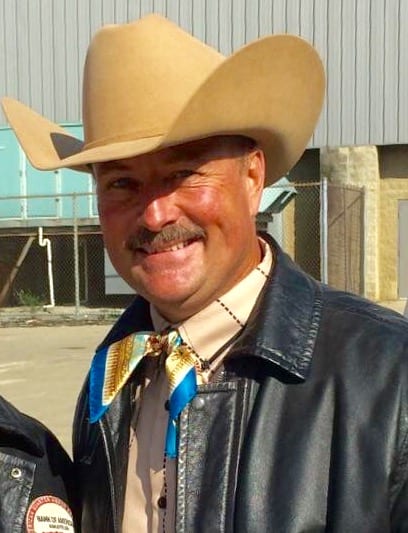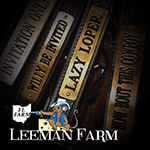Most horsemen, from the most seasoned professionals to the most novice beginners, have at one time or another, unintentionally allowed bad habits to develop in show horses. Some may result from pain, exhaustion, or stubbornness, and others may just come from old age and/or improper training. If not addressed, bad habits can lead to unruly or sour horses.
However, training techniques have gotten better over the years. Exhibitors have become more in-tune with their horse’s needs, so there are fewer sour horses as a result. The best practice is to correct bad behaviors as they surface to prevent bad habits from forming, but you can correct habits with appropriate techniques.
GoHorseShow interviewed professional horsemen Leonard Berryhill and Brent Maxwell to get some tips on how to fix your horse’s bad habits at home and in the show pen.
Refusals
 Berryhill has noticed in rail classes, that horses may refuse to lope off. The first step to fix a lope-off refusal is to ensure there isn’t a health issue making the horse uncomfortable.
Berryhill has noticed in rail classes, that horses may refuse to lope off. The first step to fix a lope-off refusal is to ensure there isn’t a health issue making the horse uncomfortable.
You will want to contact your vet to schedule a thorough examination. Once determined there isn’t a physical problem, Berryhill suggests changing up your style and putting the horse in a different situation; using another bit, taking off your spurs, or cueing differently creates a change in training that can make a big difference in performance.
Anticipation
After a horse has practiced many pattern classes, it may start to pick up on subtle cues, like the rider’s body language or cones in the arena, and initiate a change before a cue is delivered. This behavior of anticipating cues can be produced from over-practicing.
Berryhill said, “Focus on completing specific maneuvers rather than working through an entire pattern. Change up the sequence in which you do the maneuvers.”
He also suggested taking the cones out of the patterns and mixing up your routine. If you need to practice a pattern before a show, practice the pattern larger than you would in the show, practice it backward or even outdoors.
 Brent Maxwell has a similar philosophy, “With pattern horses, there are some that you can’t practice the pattern with as they learn it. These types of horses get prepared by working just the maneuvers and not putting the entire pattern together.”
Brent Maxwell has a similar philosophy, “With pattern horses, there are some that you can’t practice the pattern with as they learn it. These types of horses get prepared by working just the maneuvers and not putting the entire pattern together.”
There are only a few patterns in western riding, and essentially, a horse is asked to change leads in a similar spot each time they perform a pattern. As a result, horses will start to anticipate changing leads at the cone and perform the change independently.
Berryhill wants a horse to think, but only change when asked. So, he suggests starting to cue for a lead change, but not executing the change, making the horse focus on what you’re asking. Berryhill also suggests riding far past the cone to execute the change, so the horse stops anticipating the change at a specific cone.
Head Carriage
Head carriage is an essential component in developing the horse’s frame and can vary greatly. Maxwell states, “Conformation affects natural head carriage.” Most horses are bred to carry their necks in a low position. A horse that holds its head too high needs to be collected to develop a correct frame or a level top line, but a manufactured, low head can influence how the horse’s front end moves; they can become cumbersome on their front quarters.
“Horses with this problem need to be elevated, which can be done by lifting the horse’s head and neck and getting more impulsion from behind,” according to Maxwell.
From a judge’s standpoint, Berryhill finds a horse traveling with its head behind the vertical to be offensive. This habit is usually developed out of fear of the bit, rather than respect for it. According to Berryhill, you lose control of the horse’s body when its head is behind the vertical, and fixing this problem can be a long process.
First, he suggests using a very soft bit, taking spurs off, and pushing the horse into the bit. Then, Maxwell added, “Use bending exercises and circling maneuvers to soften the horse through its jaw.”
Horses can develop habits that may not impact their performance, but could trigger something else, such as pinning their ears during a class. Berryhill proposes finding a softer, easier way to ask the horse to perform the maneuver or transition.
Maneuvers
Showmanship is judged on the exhibitor and the horse; bad habits can quickly ruin a smooth run. For example, lifting a pivot foot is a common problem that leads to large deductions in showmanship scores.
Understanding the mechanics of how the horse moves will help the exhibitor make adjustments to correct behaviors. For example, Maxwell stated, “A horse that lifts its spin foot and puts it back down in the same spot is trying to maintain balance. The non-pivot foot needs to be brought forward for balance.”
Backing can also be a problematic maneuver during a showmanship pattern. The horse needs to stand up in its withers and move its shoulders to back properly and straight.
Maxwell specified, “A horse that drifts right has its shoulders away from you. A horse that drifts left has its shoulders dropped to you. Backing circles and squares will teach your horse to maneuver the back more easily.”
Playing with or biting the chain in the show ring can be a distracting and destructive habit. Therefore, it’s important to discipline this behavior at home when practicing. Maxwell discourages the use of the chain for punishment because it can sometimes make the behavior worse.
In western riding or a horsemanship pattern, horses can learn to perform non-simultaneous lead changes, in which they change leads separately in the back and front. This incorrect change is because the horse’s body is out of position or out of frame.
Maxwell explained, “Most of the time, the horses aren’t collected enough and don’t have the momentum for the lead change to follow through properly. So, instead, try moving forward with more impulsion and keep the horse’s body straighter.”
Berryhill suggests, “Learn more about the position of the shoulder and spine of the horse, while cueing and asking for the lead change. By teaching the horse to become softer and more reactive through its shoulders, the horse will perform a lead change smoothly, as long as it’s healthy and sound.”
Spins are also a common maneuver in a horsemanship pattern. If the horse is not in the proper frame, it may swing its hindquarters around the front quarters during the spin. When starting the spin, these horses usually don’t follow their head and shoulders in the turn and engage their front feet.
Maxwell suggests, “Start by turning small circles and making the horse follow its head while making sure the front feet are engaged and moving. Then start to tighten the circle to spin. Keep practicing until the horse learns to stay over its hocks and turn correctly.”
Scares Easily
Objects, situations, or sounds can scare a horse inside and outside of the show pen. For example, heavy traffic in the arena, or someone in the crowd making noise can cause your young or experienced show horse to panic.
Maxwell describes, “Patience and reassurance is the key when learning what scares the horse and how it will react.”
Berryhill also recommends to, “Try and imitate different distractions and situations at home to desensitize your horse.”
Seasoned Horses
Horses with a lot of training and experience can become bored or sour after many years of continuously showing. Berryhill recommends the rider and horse vary routines, location, and the type of work. “Ride out in a pasture, give the horse a different job, or focus on maneuvers in different successions,” he says.
When a seasoned horse shows an undesirable behavior, it could be in response to pain. Maxwell emphasizes to, “Pay attention that they don’t get body sore and such, so they don’t get irritable because they hurt.” The more familiar you are with your horse’s normal reactions and behaviors, the easier it is to notice a change.
Bad behaviors are usually a sign your horse is trying to communicate with you. The signs of developing bad habits can be small and unnoticeable, but can quickly turn into more significant problems if left unaddressed.
As a rider, it’s essential to first make sure your horse is healthy. Then, pay attention to your horse’s behavior, and be mindful of even slight behavioral changes that could lead to your horse developing bad habits. The sooner you address bad behavior, the easier it will be to fix it.








